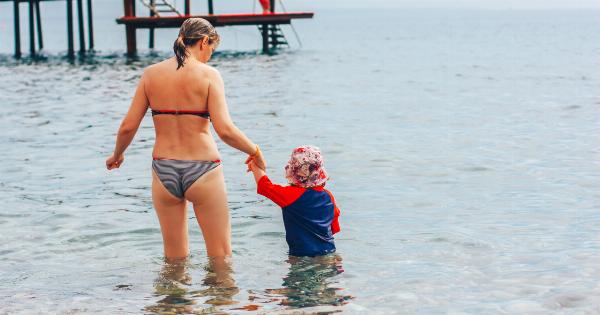Summertime is the perfect opportunity for families to bond and enjoy outdoor activities together. Cool dips in the pool or refreshing swims at the beach are often at the top of the list.
However, as a responsible parent, it is crucial to carefully consider certain factors before agreeing to your child’s plea for a swim. In this article, we will explore ten important aspects that must be taken into account before giving your approval.
1. Swimming Skills and Safety
The first and foremost consideration is your child’s swimming skills.
Are they capable of swimming independently, or do they need constant supervision? Make sure they possess a solid foundation in swimming techniques, including knowing how to float and tread water. Additionally, having a good understanding of basic water safety rules is vital before allowing them to take the plunge.
2. Depth and Water Conditions
Not all swimming locations offer the same water conditions. Whether it’s a pool or the ocean, evaluate the water’s depth, currents, and any potential hazards like rocks or sharp objects.
Understanding these factors will give you insight into the safety of the environment and whether it is suitable for your child’s swimming abilities.
3. Supervision
The presence of responsible adults or lifeguards is crucial when it comes to swimming. Even if your child is a proficient swimmer, accidents can happen in an instant, making adult supervision essential.
Ensure that there is always an appropriate level of supervision available before granting permission.
4. Weather Conditions
The weather plays a significant role in swimming safety. Monitor the forecast to avoid inclement weather such as thunderstorms or strong winds. Lightning poses a severe risk while swimming outdoors.
Make sure the weather conditions are favorable for a safe and enjoyable swimming experience.
5. Water Quality
Before saying “yes” to your child’s request for a dip, evaluate the water’s quality. Unmaintained pools or natural bodies of water can harbor harmful bacteria, parasites, or chemicals.
Ensure that the swimming location adheres to proper sanitization and regular water quality tests to provide a safe environment for your child.
6. Confidence and Comfort
Take into account your child’s confidence and comfort level. Some children may be more anxious or have a fear of water. Gradually exposing them to swimming can help build their confidence over time.
Pushing them beyond their limits too soon can have adverse effects.
7. Necessary Equipment
Always evaluate the availability of essential swimming equipment. Life jackets or flotation devices are indispensable, especially for inexperienced swimmers or when encountering unpredictable water conditions.
Ensure there are enough appropriately sized flotation devices available at the swimming location.
8. Emergency Preparedness
No matter how well you plan, emergencies can still occur. Ensure that you are prepared for any potential incidents by having a first aid kit readily available.
Familiarize yourself with CPR techniques and ensure there are individuals present who know basic water rescue skills, such as how to perform a rescue without endangering their own lives.
9. Time of Day
The time of day can impact swimming conditions and safety. Strong sunlight can cause sunburn and heat exhaustion, so early morning or late afternoon swims are usually preferred. Avoid peak sun hours between 10 AM and 4 PM.
Additionally, swimming late in the evening may affect visibility, making it difficult to monitor your child’s activities.
10. Personal Considerations
Finally, take into account any personal considerations before agreeing to a swim. If you have multiple children, ensure adequate supervision and ensure they will all be safe in the swimming environment.
Consider any individual health concerns or physical limitations that may affect your child’s swimming experience.






























